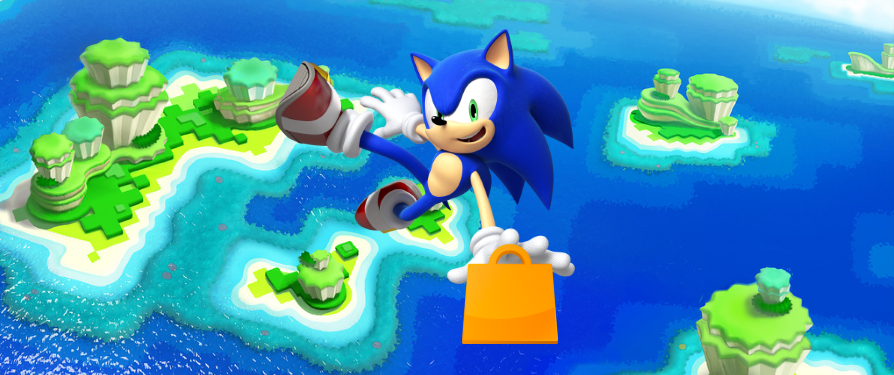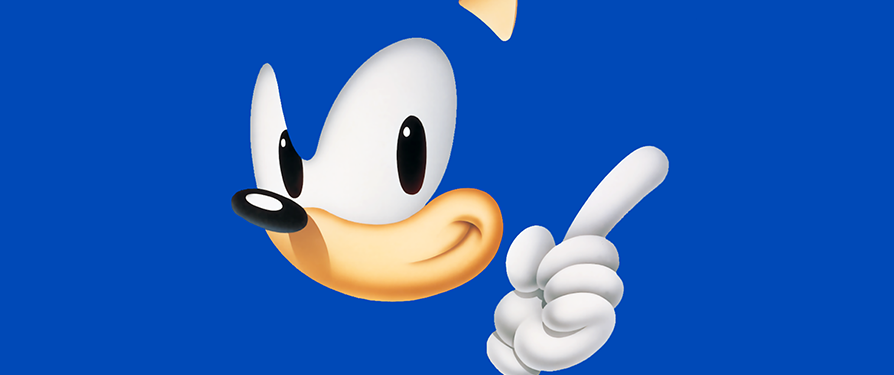 For a second opinion, please head over to SEGAbits to check out Shigs’s thoughts.
For a second opinion, please head over to SEGAbits to check out Shigs’s thoughts.
It’s felt like years since I’ve played a new handheld Sonic title that I’ve really enjoyed. Sonic Colors, Generations and Lost World have all had stages I’ve liked, but as a complete package none of them seem to be able to reach the level of the Sonic Rush titles. Unfortunately, I’m not sure if Sonic Boom: Shattered Crystal is going to change that trend, if my time with the E3 demo is any indication.
Shattered Crystal brings some really interesting ideas to the table. Instead of focusing on the typical multilayered super-fast platforming Sonic is known for, Shattered Crystal’s primary focus is exploration, with some brief speed areas in between large, expansive, almost labyrinthine areas. These stages are huge. As I was playing I constantly tried to go off the beaten path to find every nook and cranny, which often resulted in me uncovering small hidden areas. Sometimes however, I found myself on a completely new path that took me further into the game. The exploration is facilitated by the diverse cast of Sonic characters at your disposal in the game.
At the start of the game you will only have access to Sonic, with Knuckles, Tails and Sticks being made available later on. Each of these characters have their own moves that allow them to access specific parts of a given stage: Sonic can blast through these large blue blocks that block certain areas, Tails can glide on air currents that allow him to access high places and get over gaps, Knuckles can dig through specially marked areas to get around walls and access hidden areas, and Sticks can hit faraway switches with her boomerang. Between these different abilities you can solve a variety of simple environmental puzzles and explore an expansive level design that is the very antithesis of “hold right to win”. Doing that here will rarely get you anywhere, except maybe dead.

Compared to The Rise of Lyric, Shattered Crystal is much closer to a typical Sonic experience. All of the characters have a homing attack, are able to boost anywhere in the game, there are loop-de-loops, booster pads and checkpoint posts, and the overall game just feels a lot more familiar. That isn’t to say there aren’t some serious differences though. Much like the Wii U game, lives have been removed and rings now act as a life bar. It’s now possible to switch between characters on the fly, allowing you to easily choose the right character to bypass certain obstacles. Though this game feels more familiar, it is still quite distinctive in its own right.
Really, for all intents and purposes, this should be an amazing Sonic game, because it tries to correct so many complaints people have with Sonic’s side scrolling handheld affairs. In addition to being extremely non-linear, pitfalls are easy to spot in the opening stage and the game rarely moves with any serious speed. Even with the boost button the game never approaches the speed of the Rush games, which could often move too fast. So what’s my problem with this game?Unfortunately, it’s the level design and the interface.
Both the level map and character selection share the touchscreen, and players have to switch between them in order to access the different functions. In the demo, which starts with all the characters unlocked, this was a problem. In order to move smoothly through a level you need constant access to all four characters so you can quickly switch to them on the fly, but in order to make your way around the complex level design without getting lost you need access to the map screen. This game isn’t slow and methodical like other Metroidvania type games: there is constant movement and action here, and this game is at its best when you’re able to move through stages seamlessly. This interface results in awkward pacing and frustrating stop and go gameplay.

When I first played the demo I preferred to keep the lower screen on the character selection screen, but I quickly found myself becoming lost and going in circles to the point where I was growing increasingly frustrated. So I switched to the map screen and thought my problems were solved….until I began to run into a constant flow of obstacles that required different characters, a few of which I didn’t realize were there until it was too late, causing me to fall to a lower area and forcing me to make my way back up. So I found myself constant having to switch between screens twice with many of the obstacles I encountered in order to ensure I always had access to the map screen and didn’t become lost again.
As an experiment, on the final day of E3 I attempted to run through the demo with just Sonic as my character. Since Sonic is the only character available at the start of the game, I thought that perhaps I might be able to blast through the whole demo as Sonic and enjoy a more seemless experience. Unfortunately, I couldn’t find a Sonic only path, so it seems that all of the characters will be needed to traverse through at least some stages in the game.
As a huge fan of Metroid, I would love to see a Sonic game like this actually work. The most painful part about this is that I feel it almost does. I feel like there is a great game here, hidden behind a frustrating interface that makes exploration and puzzle solving more of a chore then it should be. Interface aside, there are so many parts of this game that work! The level design feels like it could yield endless possibilities and I found myself constantly torn between which way I should go since I wanted to see as much as I could in the small amount of time I would have with it. I love that feeling, and the great thing is that after three playthroughs I know I haven’t seen everything in that one single stage.
The rivals race with Sticks is also a lot of fun. It’s probably the closest this game comes go traditional Sonic, with loads of ramps, loops, Mobius strips and straight-aways. You can go nuts with the boost button here, and let me tell you that in terms of physics this is probably the best handheld Sonic has felt in a long time. The characters feel like they have weight again, rather than hollow plastic action figures come to life. It feels like momentum kind of means something here, too. Finally, there’s also a 3D tube level, which adds a nice bit of behind the back 3d excitement to the proceedings. It’s nothing spectacular, but it was fun.

After five years worth of E3s, there are three things that can usually be fixed between the demo and the final product: interface, controls, and minor graphical issues like frame rate and texture pop-in. These demos are always examples and works in progress, and I’ve seen these issues be fixed before. This game’s two major problems are its interface and framerate (which fell well below 30 frames for a sizeable portion of the demo), so this game could certainly still be a lot of fun. Personally, I’d like to see the character screen either integrated with the map screen, or mapped to the d-pad like it is on the Wii U version. I found myself preferring to control the game with the analog stick, since the game feels like it was made to work well with analog control. Alternatively, character selection icons could be relegated to one side of the map screen, so they can be accessed quickly there.
Provided Sanzaru finds a solution to this issue, this could be one of the best side scrolling Sonic games in years. If they don’t, this may unfortunately continue the string of mediocre handheld titles that the Sonic series has been left with since they were tied into the console releases. Either way, we’ll find out when the game is released in November.
The Sonic Stadium may link to retailers and earn a small commission on purchases made from users who click those links. These links will only appear in articles related to the product, in an unobtrusive manner, and do not influence our editorial decisions in any way.









